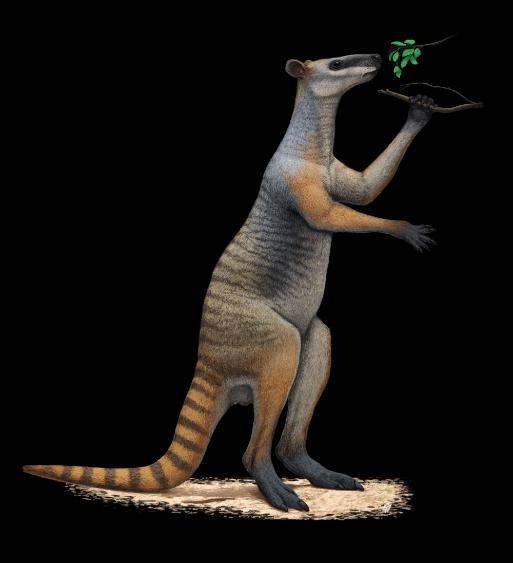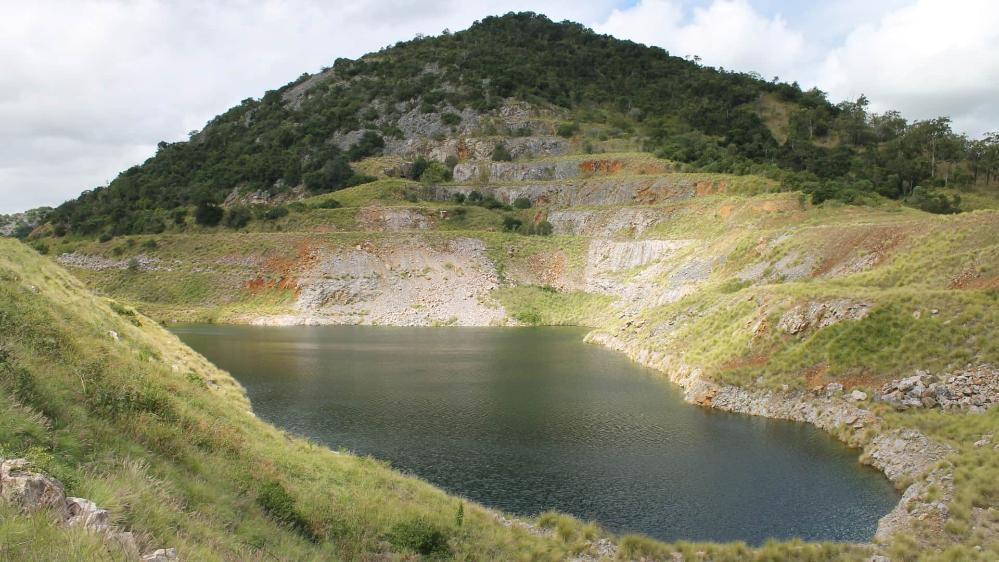Game-changing new technology gives astounding insights into the lives of marsupial megafauna: what they ate, where they moved, how they died
A new study that uses technology likened to an 'ancient GPS' has for the first time provided an insight into the ancient behaviour of the extinct species of giant kangaroos that were once found in the rainforests of Queensland.
The study, published today in the journal PLOS ONE, revealed that extinct giant kangaroos, a species of Protemnodon, were not intrepid travellers who bounded across the plains, but rather homebodies, who did not journey far throughout the course of their lives. This discovery mirrors the behaviour of modern species of kangaroos but was surprising to the research team.
In fact, the giant kangaroos' desire to stay close to home, during a time of major climate upheaval 300,000 years ago, likely contributed to their demise.
Led by the University of Wollongong (UOW) PhD candidate Chris Laurikainen Gaete in collaboration with experts from Queensland Museum, and the University of Adelaide, the research focused on fossils discovered in Mt Etna Caves, north of Rockhampton in central Queensland.
 Lead researcher and UOW PhD candidate Chris Laurikainen Gaete with a tooth fossil from a giant kangaroo.
Lead researcher and UOW PhD candidate Chris Laurikainen Gaete with a tooth fossil from a giant kangaroo.
The team used biological and environmental fingerprinting techniques, alongside refined geological dating, which enabled them to build a comprehensive picture of the giant species.
Mr Laurikainen Gaete, a PhD candidate in UOW's Faculty of Science, Medicine and Health, said the ancient kangaroos remained close to where they were found as fossils, indicating that the megafauna had incredibly small home ranges.
"Using data from modern kangaroos, we predicted these giant extinct roos would have much larger home ranges. We were astounded to find that they didn't move far at all, with ranges mirroring smaller modern kangaroo species," Chris said.
The Protemnodon lived across Australia, but were specifically occupying rainforest habitats that covered the Mt Etna Caves region, around 280,000 to 500,000 years ago. Major climatic changes occurred in the region that saw the disappearance of rainforest habitats and the local extinction of the giant kangaroos.
 Dr Scott Hocknull, Senior Scientist and Curator, Queensland Museum, said the technology used to make the discovery was a game-changer for the field of research.
Dr Scott Hocknull, Senior Scientist and Curator, Queensland Museum, said the technology used to make the discovery was a game-changer for the field of research.
"These new isotopic techniques have blown our field right open. Imagine ancient GPS trackers, we can use the fossils to track individuals, where they moved, what they ate, who they lived with and how they died – it's like Palaeo Big Brother", said Dr Hocknull.
The study found that the small home ranges likely impacted these forest-loving species as the environment deteriorated over thousands of years, becoming more seasonal and arid.
Professor Anthony Dosseto, founder of the Wollongong Isotope Geochronology Laboratory at UOW, said the fossils provided an insight into the decline of a giant species that lived half a million years ago.
"The debate about the extinction of the Australian megafauna has been going on for decades, but now we can take it to an individual and species-by-species perspective. With these precise techniques, each site and each individual, can now be used to test and build more accurate extinction scenarios", said Professor Dosseto.
Mr Laurikainen Gaete, the lead researcher, will now use these same techniques to reconstruct the past behaviours and diets of other extinct kangaroo species from the Mt Etna and Capricorn Caves region.
"Many of the kangaroos found as fossils at Mt Etna and Capricorn Caves, including tree kangaroos, pademelons, and rock wallabies, have living descendants in the Wet Tropics and Papua New Guinea. We will now apply these same techniques to understand how these surviving kangaroo species responded to the same environmental changes that drove the megafauna extinct," he said.
 Mt Etna in central Queensland, which is now home to a deep lake.
Mt Etna in central Queensland, which is now home to a deep lake.
About the research
'Megafauna Mobility: Assessing the foraging range of an extinct macropodid from central eastern Queensland, Australia' by Christopher Laurikainen Gaete, Anthony Dosseto, Lee Arnold, Martina Demuro, Richard Lewis, and Scott Hocknull, was published in PLOS ONE: https://plos.io/4llQkxw






